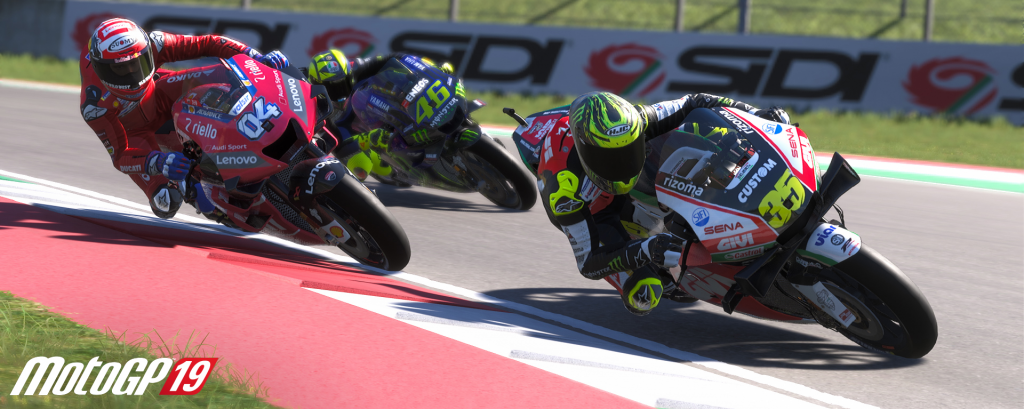AWS for Games Blog
Multiplayer of MotoGP19: How Milestone Moved to Amazon GameLift
Multiplayer games face some tough requirements to make believable worlds for players. And the meticulous attention to speed, accuracy, and physics makes real-world racing games one of the most demanding of all.
So when players ask for that world to be taken online, how would you deliver the low latency and stability needed for high-powered motorsports? Milestone Producer Michele Caletti explains how they tackled this for their upcoming title MotoGP19 below:

Milestone is an Italian game developer housed in Milan that specializes in racing titles. We have a lineup of games comprised of our own IPs, like Ride, and others based on real-world championships, like MXGP, AMA Supercross, and MotoGP.
MotoGP has always been a “pioneer” title for us since we started to regularly work on the series in 2013. It was the first realistic racing game available on the current generation of consoles, the first Milestone game with an eSports championship ran with the license holder Dorna Sports. And now, the first Milestone title with server-based online gameplay.
This last aspect was long-requested by our players who were asking for a better online experience. But from the developer’s perspective, it was pretty intimidating.
Life on the fast lane
Making a great online experience for MotoGP19 wasn’t an easy task. Racing games are incredibly demanding in terms of bandwidth and ping time to recreate a believable action on track.
Let me just drop some numbers. A MotoGP bike moving at 300km/h makes more than 83 meters per second. Think of it. 83 meters.
With 50ms of lag your opponent is more than 4 meters from where you expect him to be. Now, think of players battling shoulder to shoulder, that needs absolute precision on collisions, and a precise reproduction of the opponents’ moves. Add some subpar connections, and the results can be devastating.
Peer-to-peer architectures created issues in ping fluctuations and bandwidth inconsistencies. This created very erratic results when players with widely different connection qualities mixed up. The forecast algorithms that could cope with the issues were also very hard pressed with inconsistent packet rates and old data to work on.
Evaluating Amazon Gamelift
When we started working on the idea of server-based online matches, we immediately looked at AWS and Amazon GameLift. We had a list of aspects we needed both to speed up development of the game, and to make our life as developers easier in the long term:
Easy scaling, for both existing server locations, and new ones: Being the first time for us, we could only estimate the peak and average load. Our game is also distributed worldwide on different platforms. We may want to double the power available in central Europe, or create a new server in Japan literally overnight to manage ever changing scenarios.
Very low fixed costs, competitive variable ones, and clear forecasts: Providing a top notch online service to our players goes under the “money well spent” page. But having clear control of the expenses is important.
Powerful and reliable tools: With a team of 3 to 5 people working for almost a year to get from the foundations of the system, to the shipped game for the online area, we needed some really good tools to deploy, monitor, debug, and performance check the server code.
Amazon AWS and GameLift hit all of these areas for us, and helped us to deliver meaningful improvements.
Gone are the connection issues, NAT resolution tricks, laggy races, and inconsistent collisions.
Ping times are not only lower, but much more consistent. Bandwidth from the server is virtually not an issue, and every player has the same data movement. So, all the predictions, adjustments, and heuristics we can apply to the MotoGP world simply work better, and we’ve been able to refine them even more. With fresher and more reliable data, the on-track feeling is incredible.
MotoGP19 is launching June 6th, and is available for preorder today.
To learn more about Amazon GameLift, visit the product detail page.
To see all of the game development solutions from across Amazon, visit the Game Tech homepage.